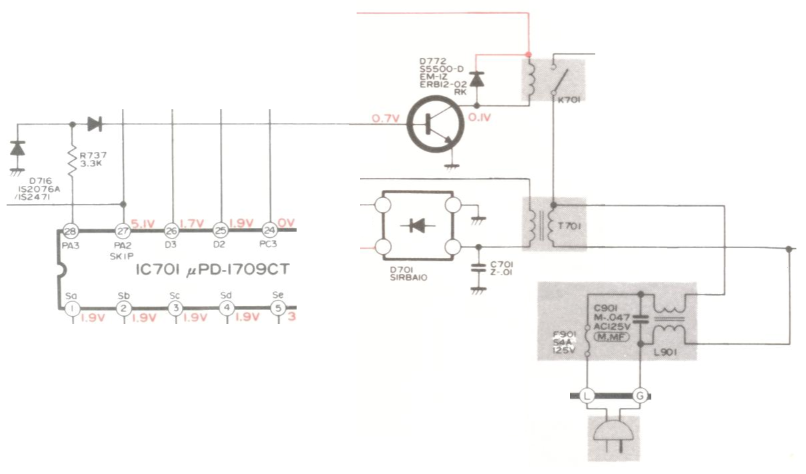I have been fancying myself as a TV repairman (I know, I know, a completely useless skill set in 2019) ever since I successfully repaired a 25-year old SANYO television set. I figured I would repeat that success with an even older television: my first television set in Canada, a 1986 Mitsubishi CS-1454C portable television. (By “portable”, they mean it weighs less than about 25 pounds and it can be hauled from one room to another without the use of a forklift.)
The problem seemed simple enough: The TV set refused to turn on. Obviously, I expected a faulty power supply or something similar, maybe due to an aging capacitor somewhere.
Alas, nope. The power supply was doing what it was supposed to do, supplying low voltage power to all the relevant parts, including the integrated circuit that was responsible for activating the relay that, in turn, would have turned on the set. But the relay never got the signal that would have turned it on. The transistor that controlled the relay never got the signal either.
Why? Well, the signal to that transistor comes from a microchip:

It comes from pin 28 of a chip labeled μPD-1709CT. What is this chip? Well, it turns out that it is, in fact, a 4-bit microcontroller with about 1.5 kilowords of ROM, factory programmed by the chip manufacturer (NEC) with code supplied by the customer.
I checked, and the microcontroller has everything. It has power, it has a clock signal. It scans the front panel keypad with beautiful, nice square waves on my oscilloscope. The one thing it does not do is outputting a signal on pin 28 when I press the Power button; which, in turn, would have provided a signal for the relay, which in turn would have energized the rest of the unit.
I am therefore forced to conclude that this television is not repairable. Even if I found a replacement chip, chances are that unless it is from the same unit, its program code would be incompatible. (The same family of chips has been used, e.g., in car entertainment systems.) Since I doubt that the manufacturer still provides support for a unit that was sold 32 years ago, the only possible source for a replacement chip would be another, cannibalized television set.
And, of course, the thing is just not worth the effort. An old style, analog television set with a CRT? Years older than half the human beings presently alive on Earth? Still, it was worth a try… I like fiddling with these old devices. Although I much prefer success stories, of course.